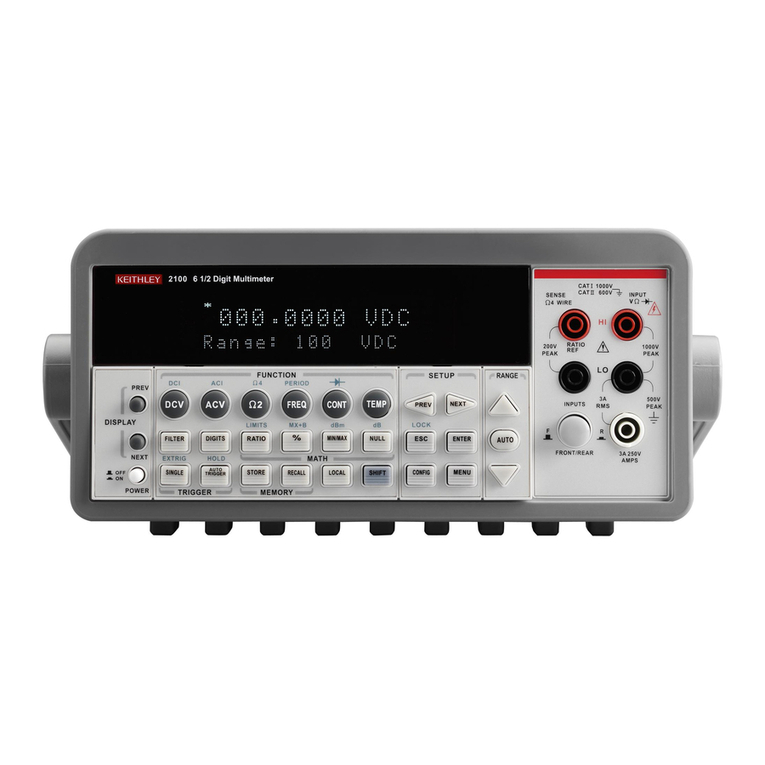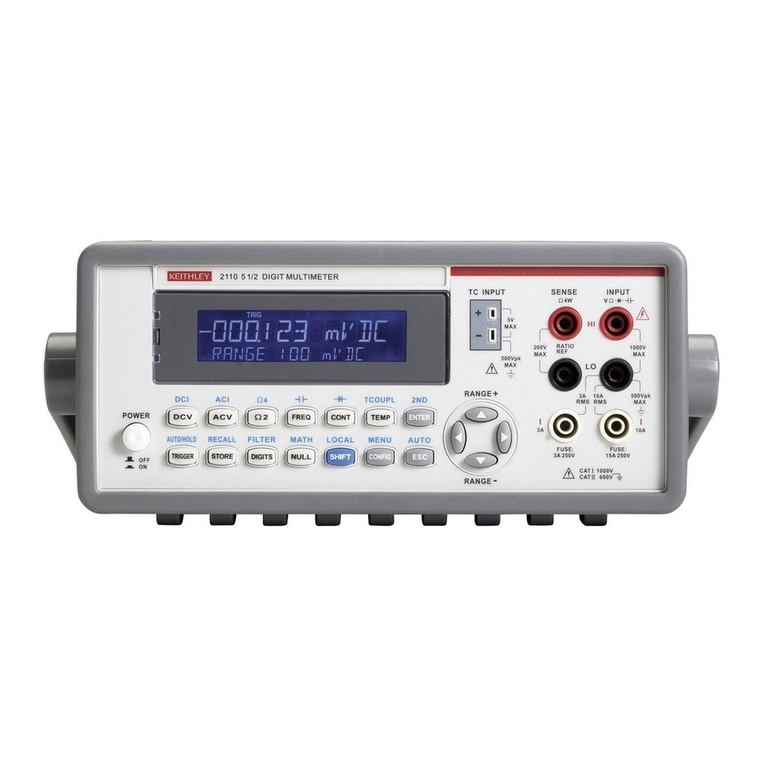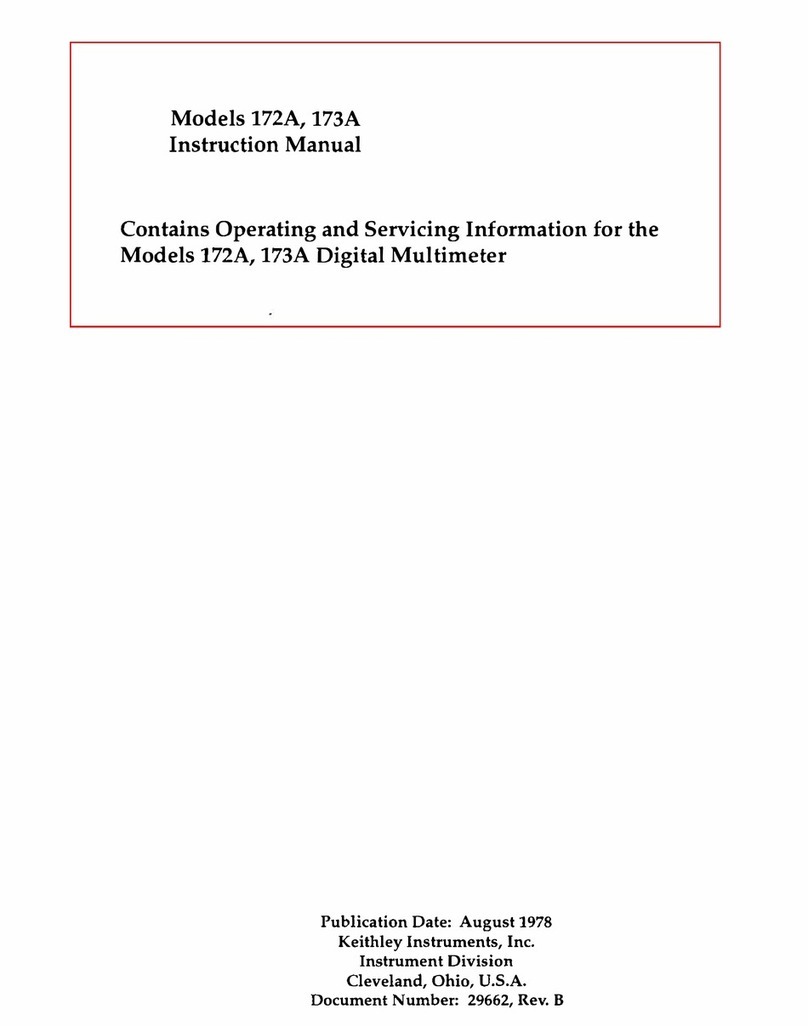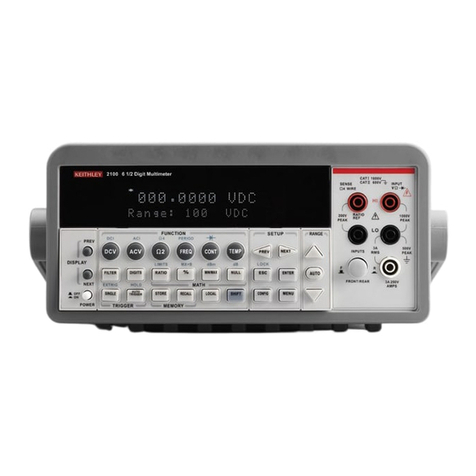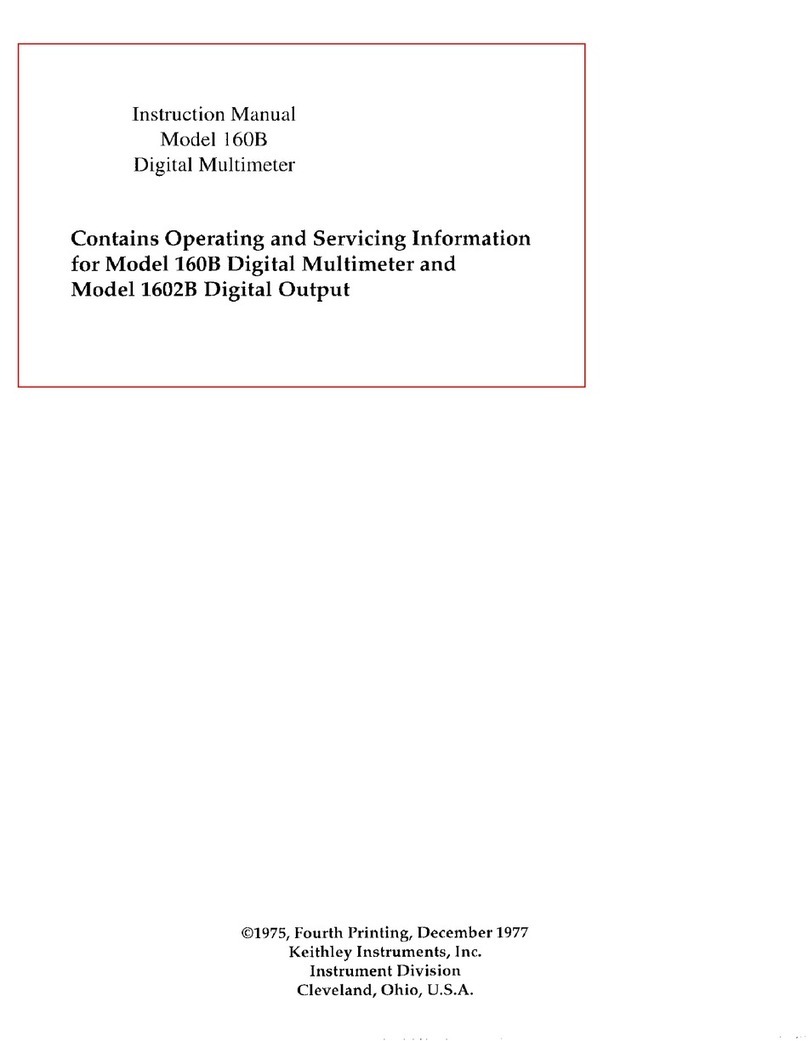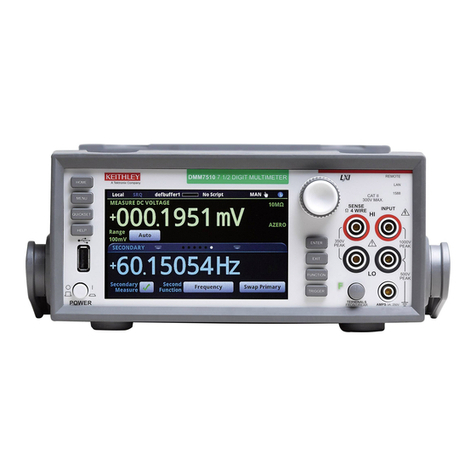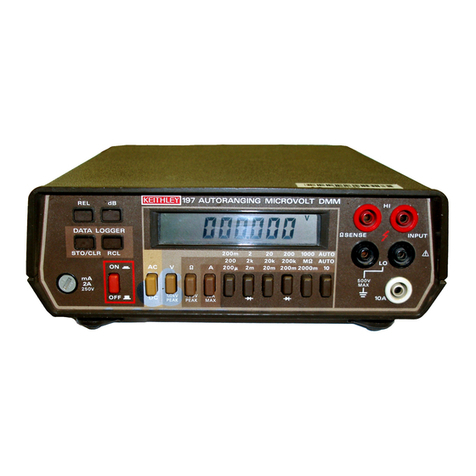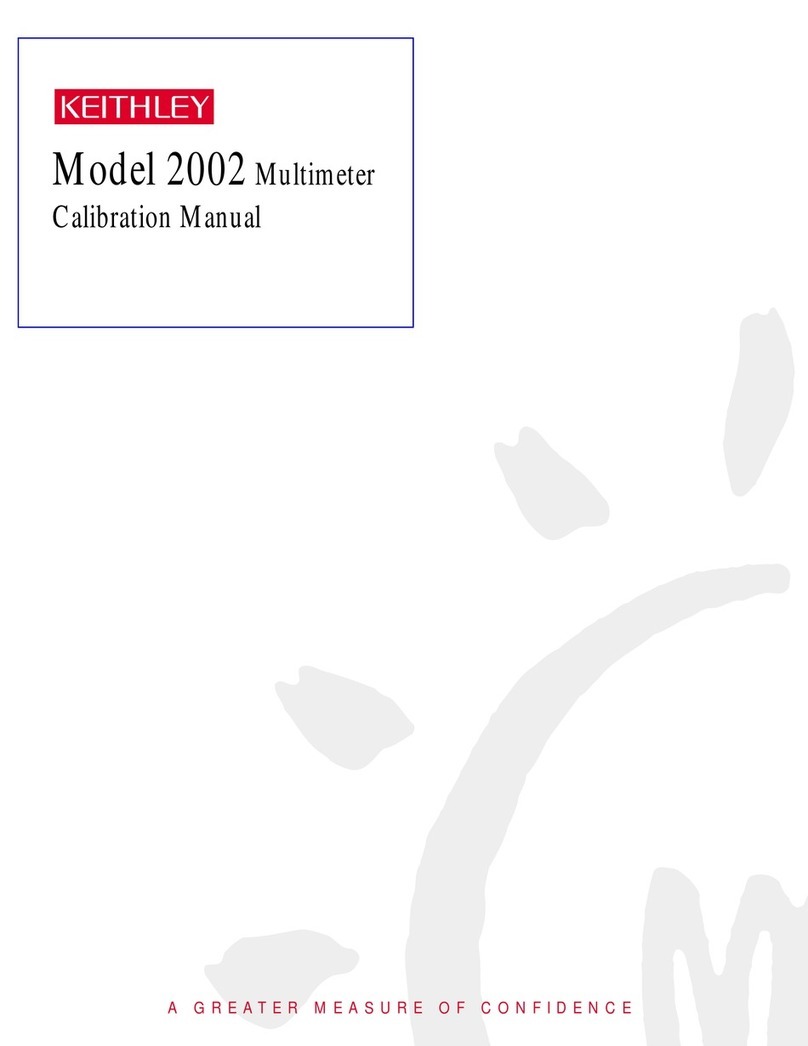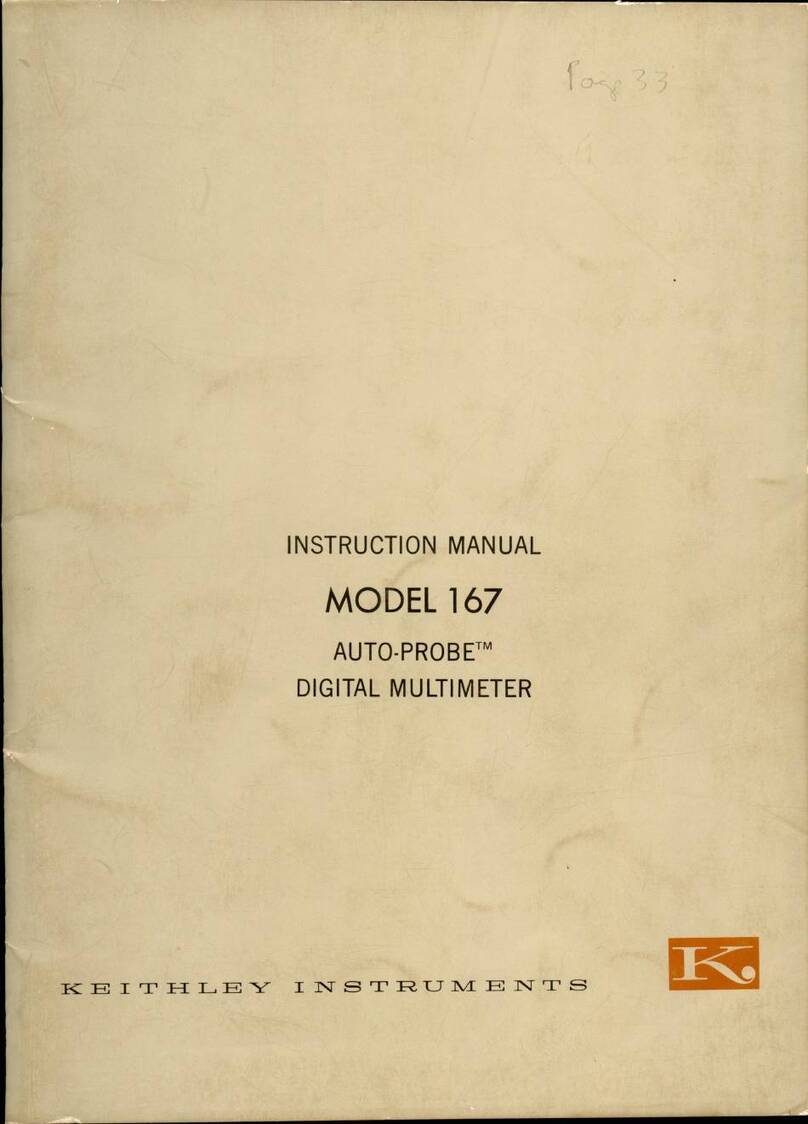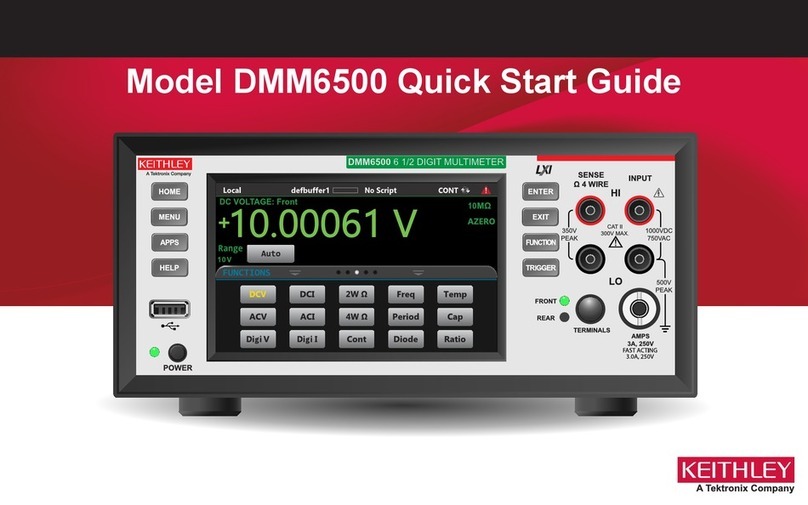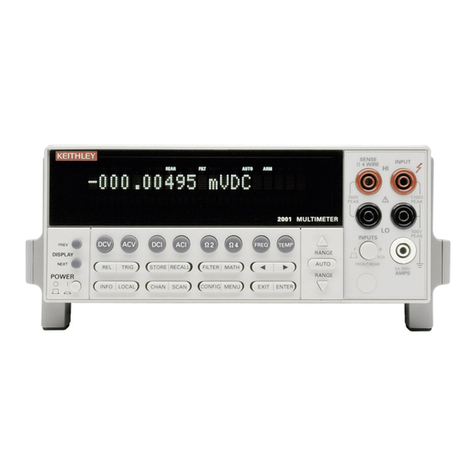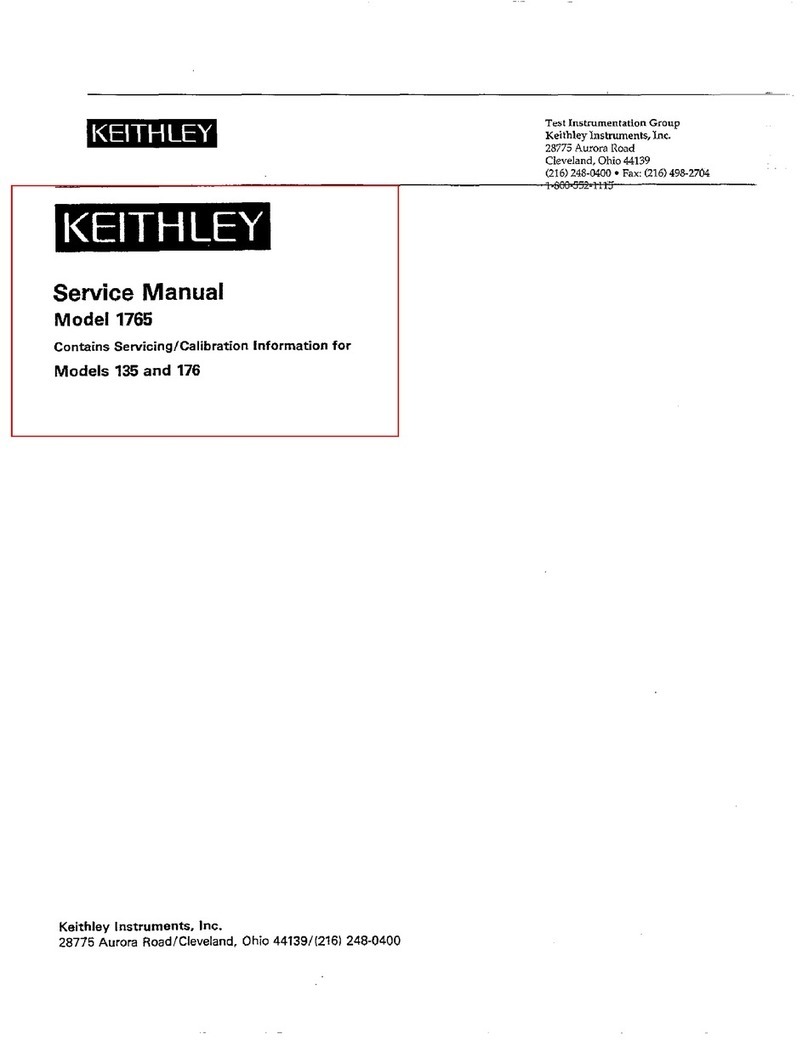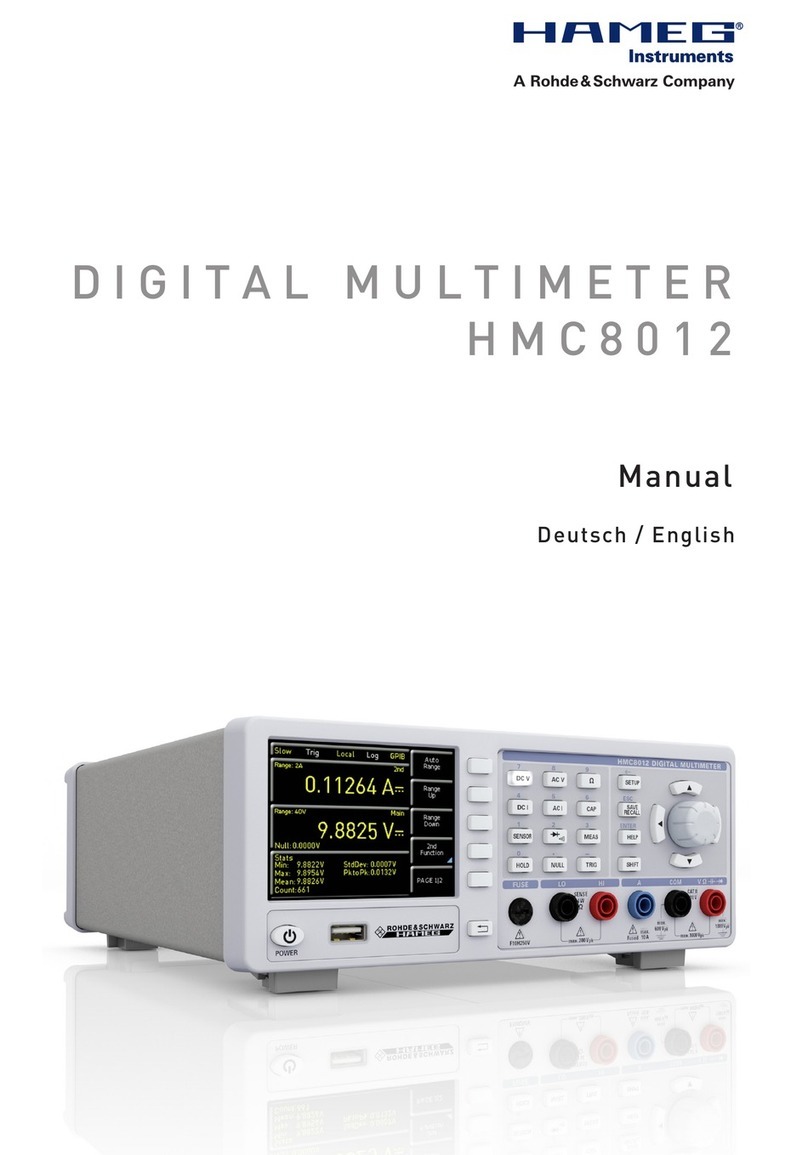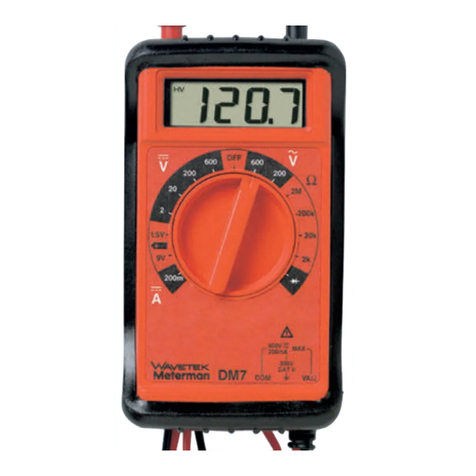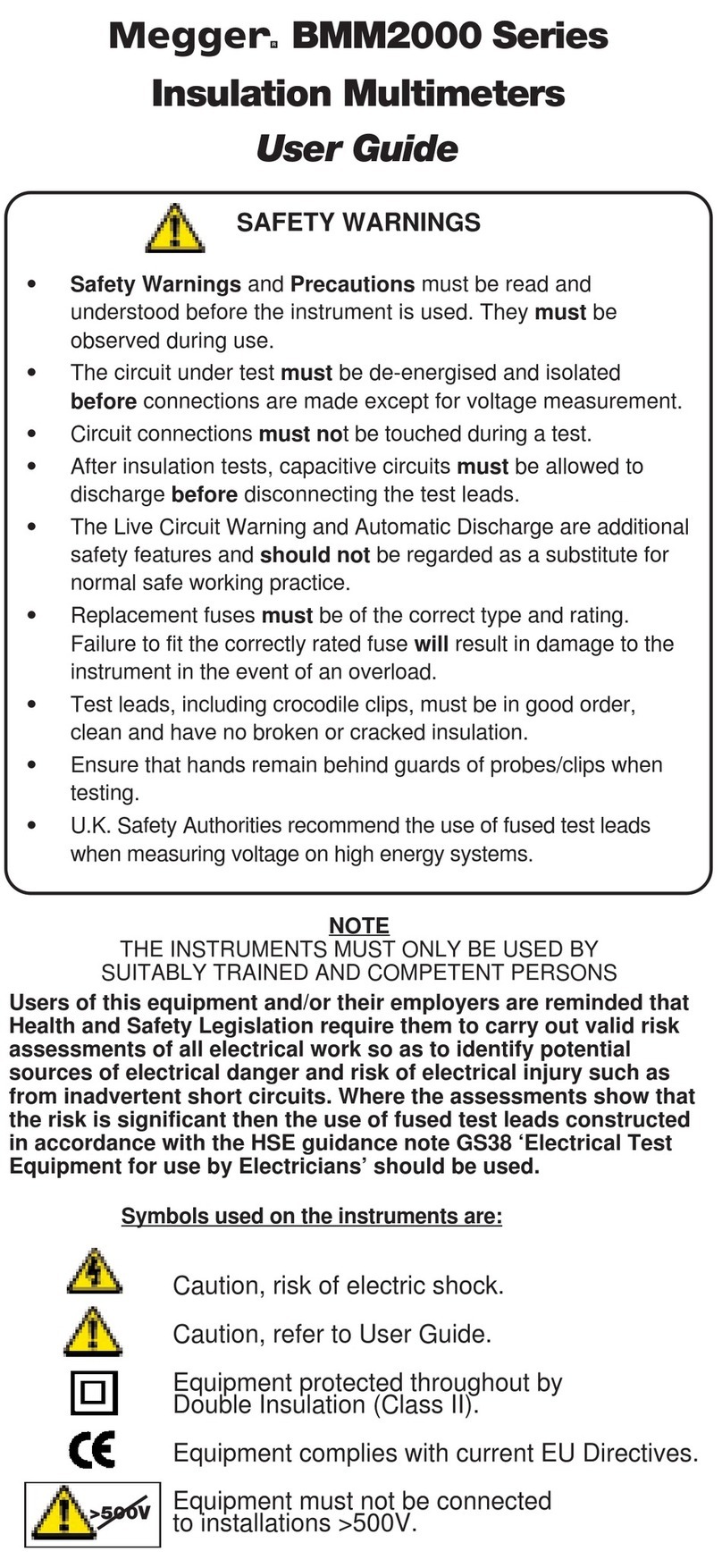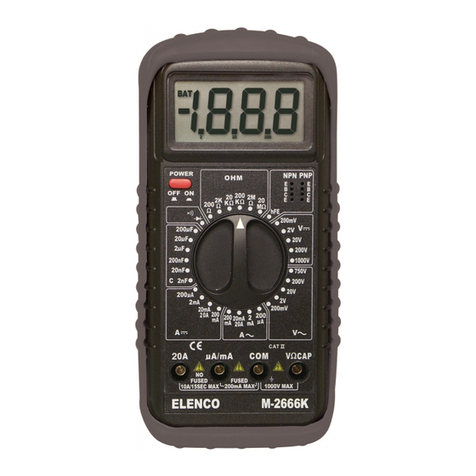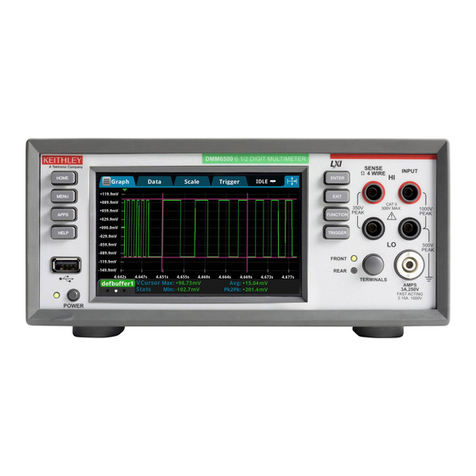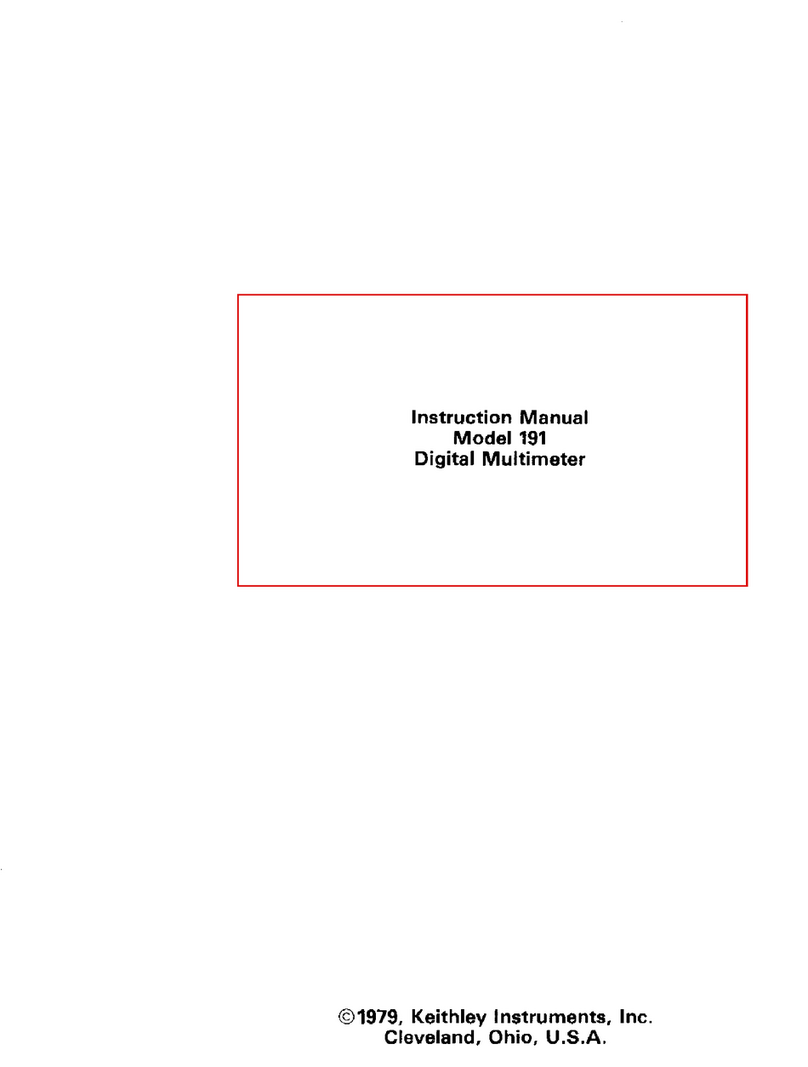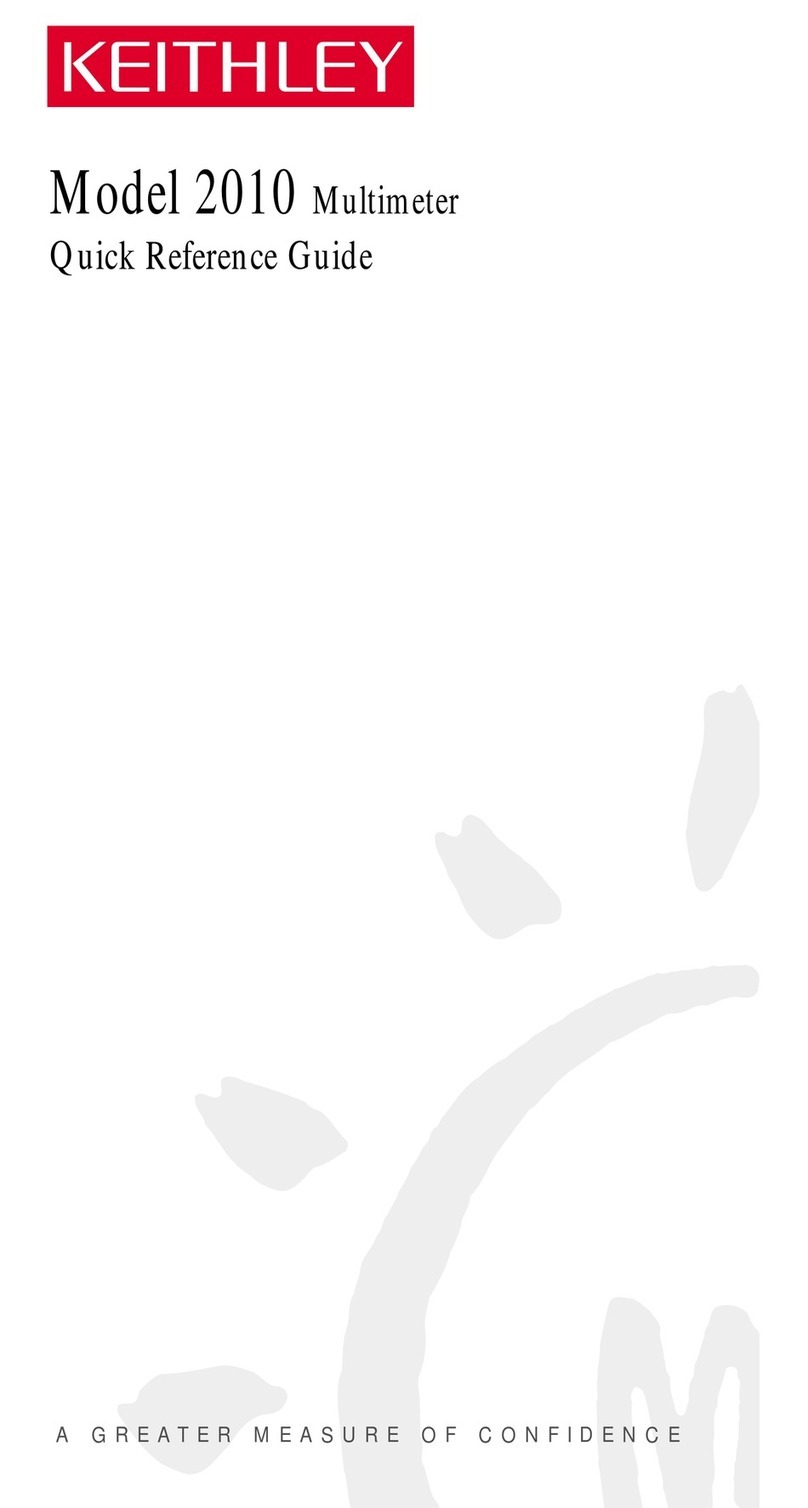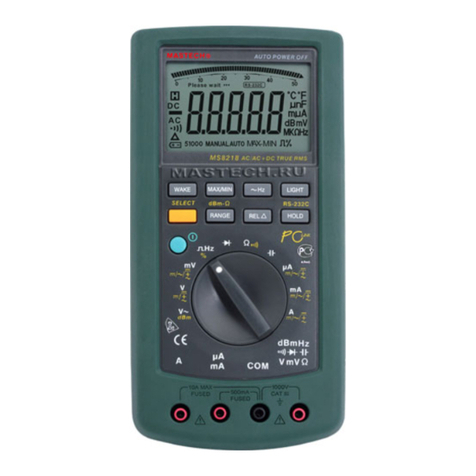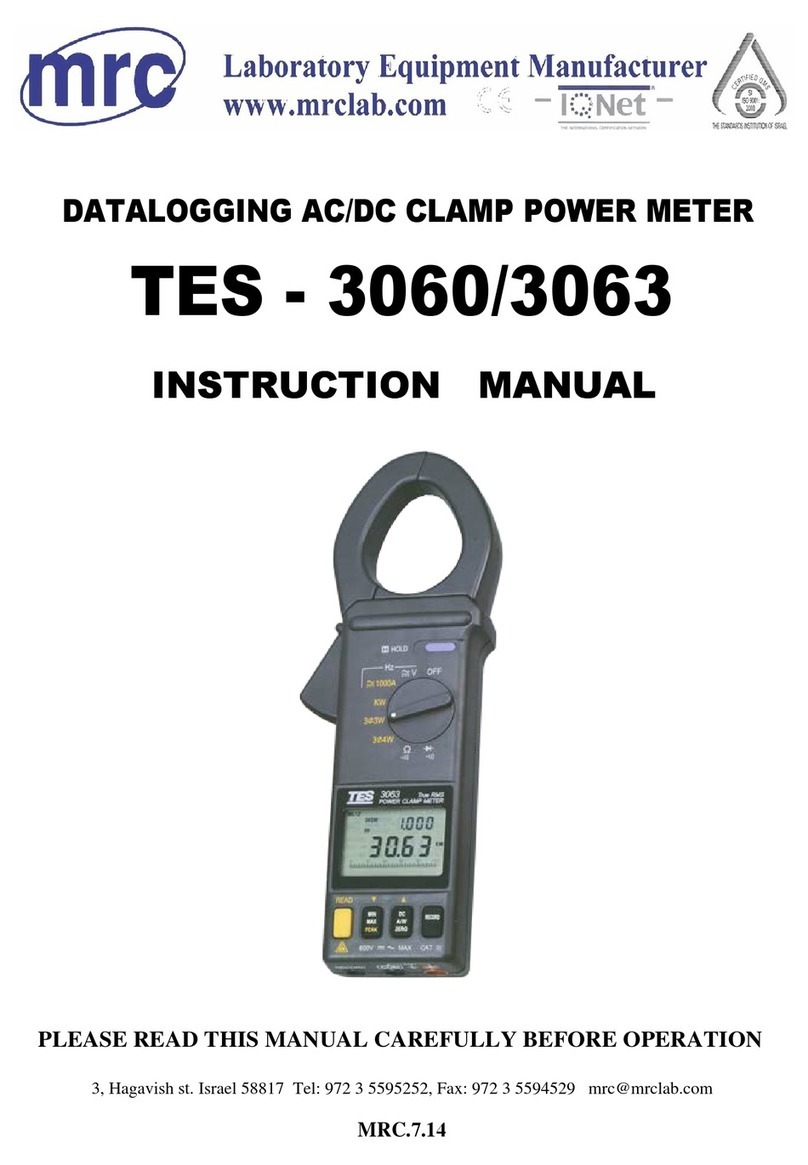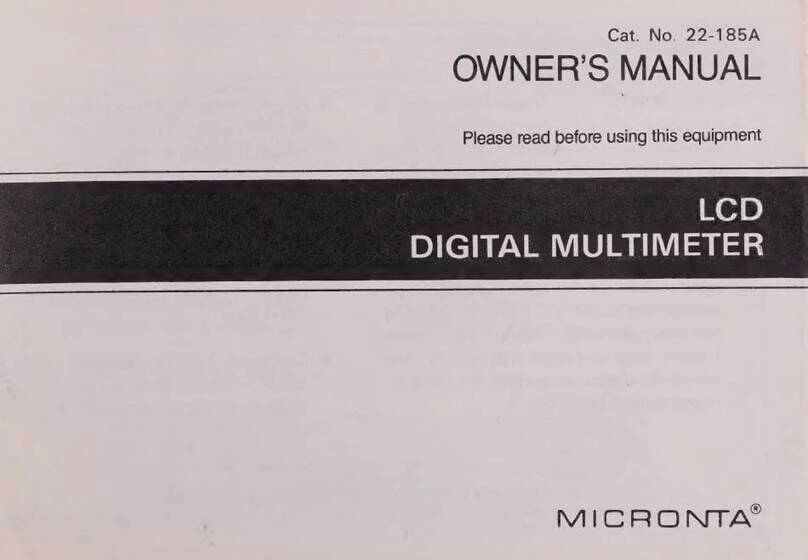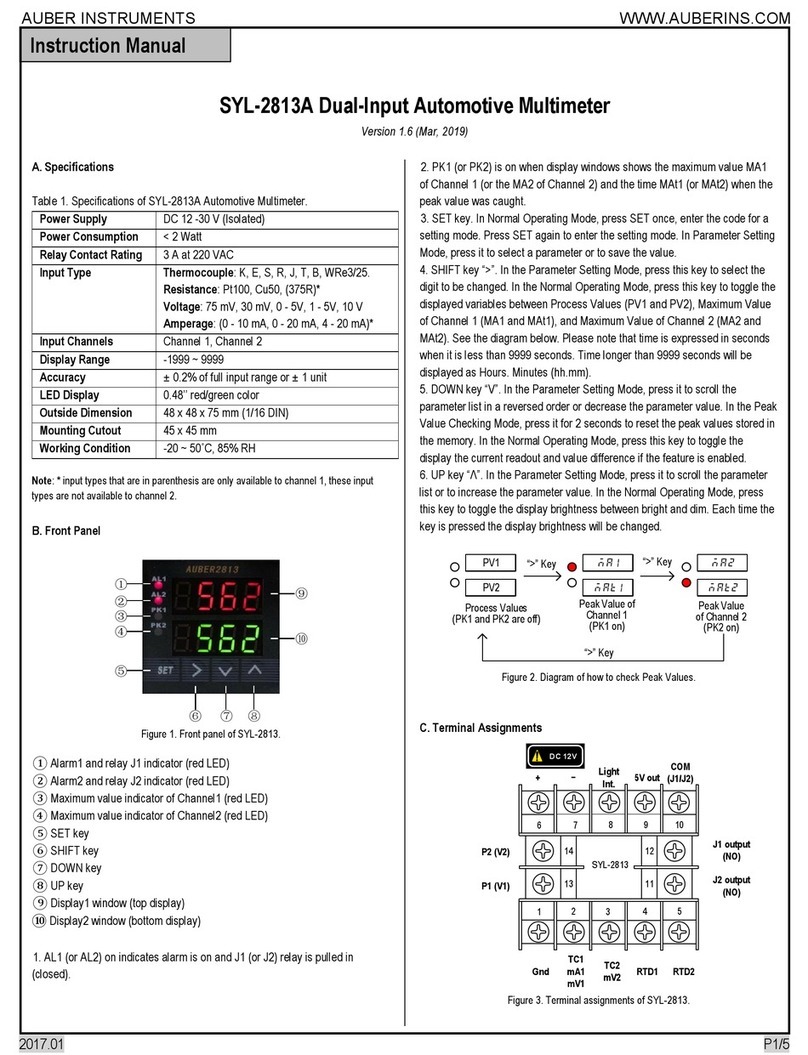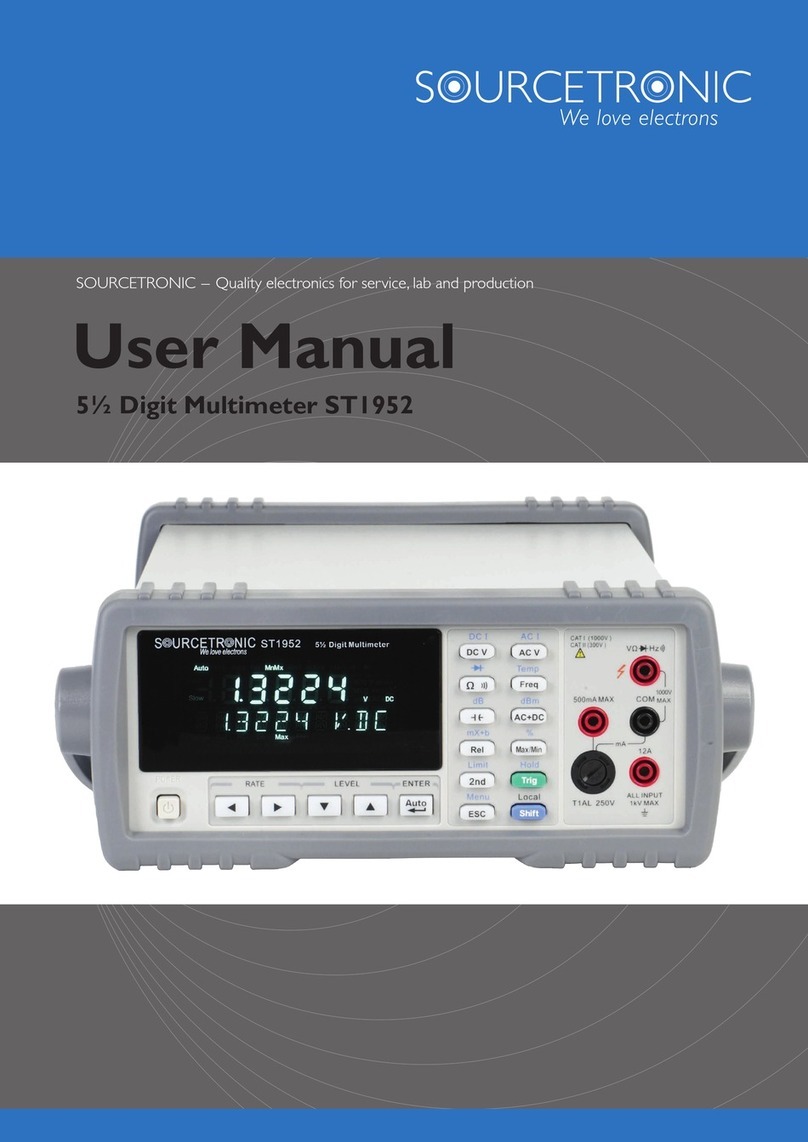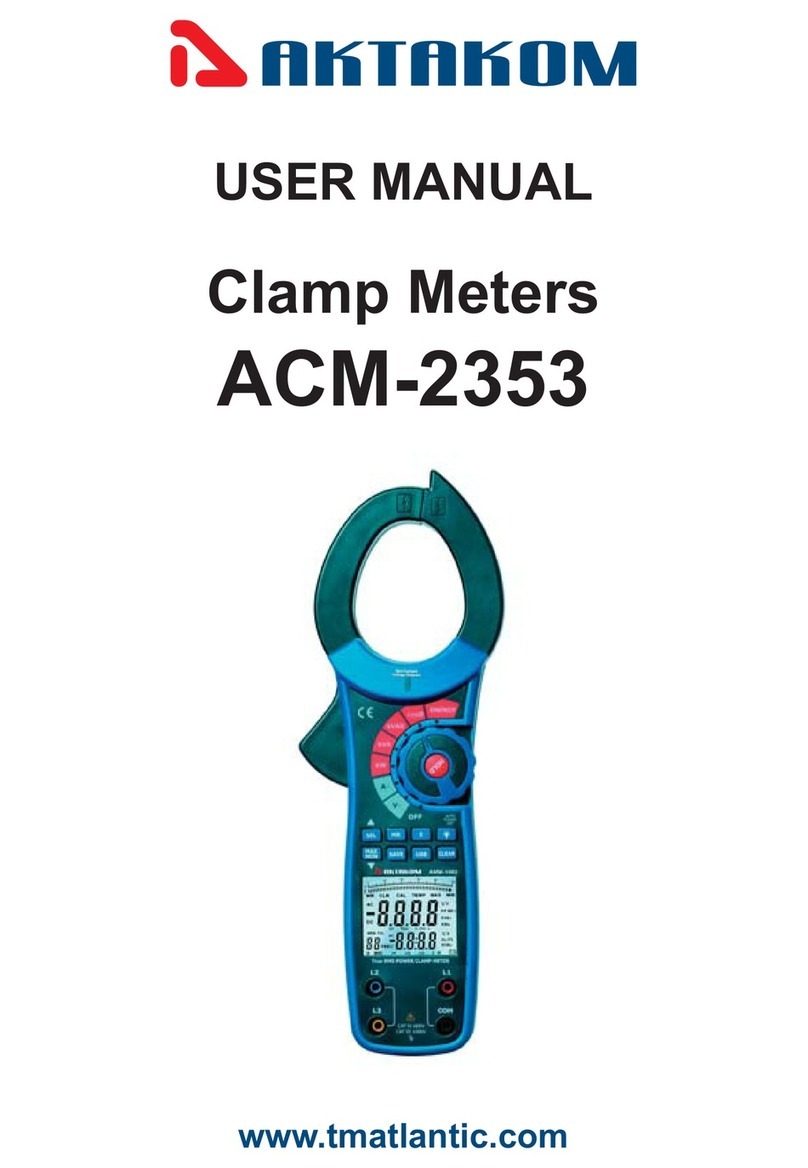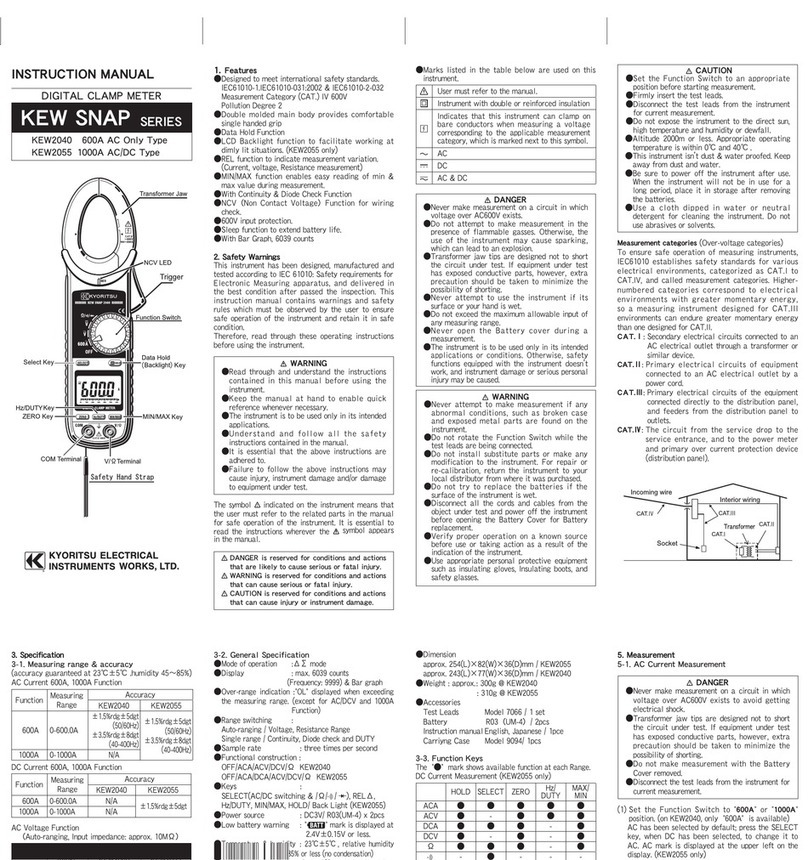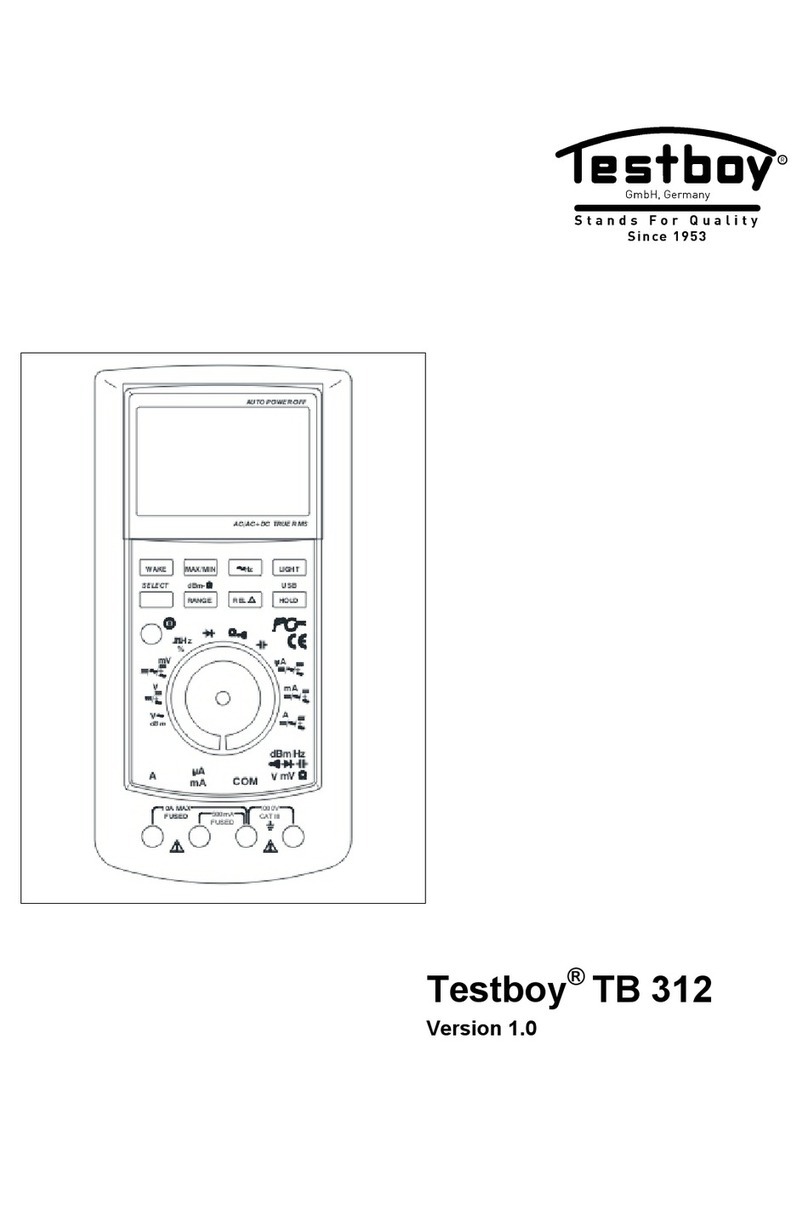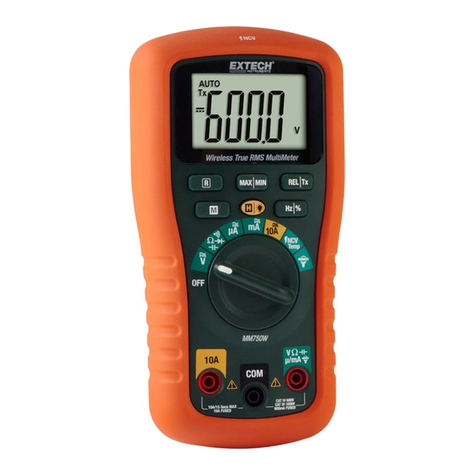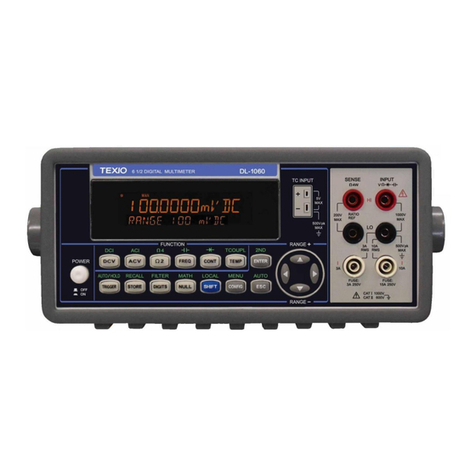
2-8
.
DC
VOLTAGE MEASUREMENT. Use the Model
178
DMM
to
measure dc volts as follows:
a.
Turn on power and depress the DCV pushbutton.
b.
Select the desired range from the four ranqes available. The maximum reading
is
19999.
Over
range is indicated by a flashing 0000 except on the
1OOO-volt
range.
CAUTION
n
1
Do not exceed the maximum ratings.
.
Instrument damage may occur.
C.
Neqative polarity is displayed automatically. Positive polarity is implied
when
the minus
(-)
display
is off.
d
Zero the
instrument as described
in Paragraph 2-11 before the first use, whenever
the’instrument
is used outside the temperature range of
18"
to 28°C, and approximately
weekly
,during
normal
use.
2-9
.
AC VOLTAGE MEASUREMENT. Use the Model
178
DMM to measure ac volts as follows:
a.
Turn on power and depress the
ACV
pushbutton.
A
I
.
CAUTION
Do not exceed the maximum ratings. Instrument damage may occur.
b
19999
Select the desired range from the four ranges available. The maximum reading is
Overrange is indicated by a flashing 0000 except on the
lOOO-volt
range. The
instrument reads the root mean square value of a sine wave with a frequency of 45 to 20
kHz.
c.
The Model
1682
RF Probe (see Paragraph
2-12e)
should be used to measure ac voltages
with a frequency of 20kHz to 100MHz.
.
.
2-10.
RESISTANCE (R) MEASUREMENT. Use the
178
DMM to measure resistance as follows:
Turn on power and depressthe
Sz
pushbutton.
CAUTION
n
1
Do not exceed the maximum ratings.
.
instrument damage may occur.
b
19999
Select the desired range- from the five ranges available. The maximum reading is
Overrange is
M refers to meqohms. indicated by a flashing 0000. The letter k refers to
kilohms, and
c.
The HI inputterminal is positive and causes forward conduction of semiconductor
junctions.
d
.
Two volts is applied at full range with
5
volts maximum under open circuit conditions.
Zero the instrument
as
described
in Paragraph 2-11 before the first use whenever
theainstrument
is used outside the temperature range of
18°
to
28°C,
and approximately
weekly during normal use.
2-11.
ZERO ADJUSTMENT. The zero adjustment nulls input offset on the 20, 200 and 1200
volt ranges and on all resistance ranges. Typically, this adjustment need
not be per-
formed more often than once a week unless the instrument is operated at ambient
temperatures outside the range of
18°
to
28°C.
Zero adjustment may also be used for lead
compensation on the
Q
function.Zero the instrument as follows:
a.
Turn on
the power
and select DCV
and
the 20
range.
b. Plug
in test leads and short them.Adjust the zero adjust (pot
R132)
from the
front panel with a small screwdriver to obtain a reading of 0000 or
-0000.
2-12. ACCESSORIES. A
wide range of accessoriesis available to facilitate use of the
Model
178
DMM,
extend its range and adapt it for additional uses.
